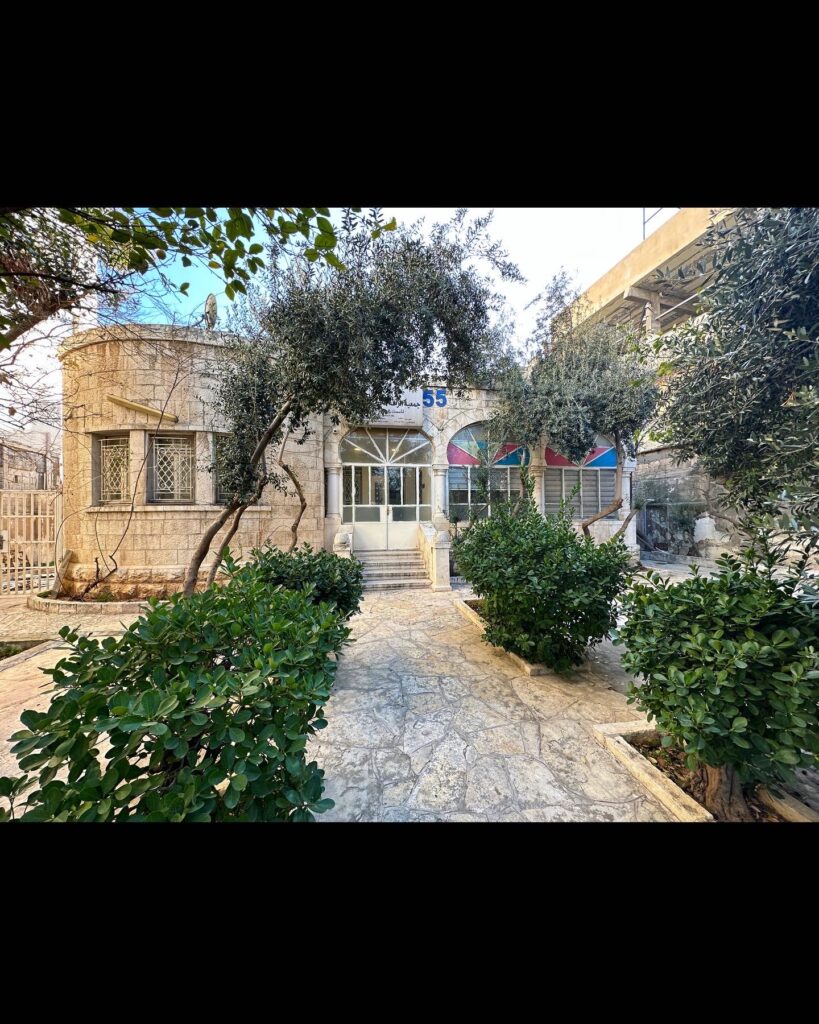Jabal al-Hussein walk and talk. Episode 4.
Tread carefully as you walk the streets of your city. Your eyes might be catching a glimpse of great beauty, but your feet may be touching a site of great tragedy.

As we walked up from the lower part of Jabal al Hussein, Hussein pointed to our left and said “look at this beautiful house”. The main street, dominated mostly by the street level shops of multi-story building, suddenly opens up to reveal a mini paradise of olive and citrus trees, with a paved stone path that leads to an architectural gem: a small Ammani stone house that can only be described as being designed and built with love.
I must have passed this house countless times during my time in “Al Hussein” in the 1980’s. But that was before my eyes were opened to the world of architecture. Still, I could vaguely remember it.
The front facade is dominated by three arches of unique proportion, carried on circular stone columns. One of the arches becomes the door of the house, to which a few steps of diminutive palatial quality lead.
The left side of the facade seems cylindrical, punctuated by what I call a transitional-style window, meaning that it has both the horizontality of modernity and the verticality of more traditional building methods. Essentially three little window openings melded into one by an awning.
There is a fairy tale quality about this house. Its size, its design and the fact that it is nestled in this gap, the delightful stone and metal-framed windows of the facade, the fact that it as half hidden by its generous front garden, all of this makes this a unique example of 20th century Ammani architecture.

Be careful as your eyes see great beauty.
We didn’t know what ground we were treading.
Minutes after rediscovering this gem, a person from the area told us a story. I retell it here without being able to verify it:
“The house was was built by a Circassian family, who moved into their new residence in 1969. The family had two sons, perhaps teenagers, and two daughters. In 1970, Jabal al Hussein, and its large Palestinian refugee camp were the one of main the scenes of the tragic events of that year, as violent clashes erupted between the Jordanian Army and Palestinian guerrilla fighters.
Tragically, the two sons of the family were killed at the entrance of the house.
The grieving mother could not stand to continue to live there and the surviving members of the family moved out.”
—
I was deeply shaken by the story. I did not ask further questions about the circumstances and details of the tragedy. 52 years later the events of 1970 are still a sensitive issue in Jordan. All I could feel was deep sadness.
Since 1971 the beautiful house has been rented to Al Ramla Charity Organization, which provides social and vocational assistance to people in need in the area. Ramla is one of Palestinian cities from which people were expelled during the creation of Israel in 1948. They became refugees in Jordan.
—
I suddenly remembered that my friend Khaldoon’s family is originally from Ramla. Then I remembered his kind grandmother who often welcomed us for lunch after school. She lived in a little house at the end of a narrow alley right opposite to Al Hussein College. She was from Ramla. Of course.
Leave a Reply